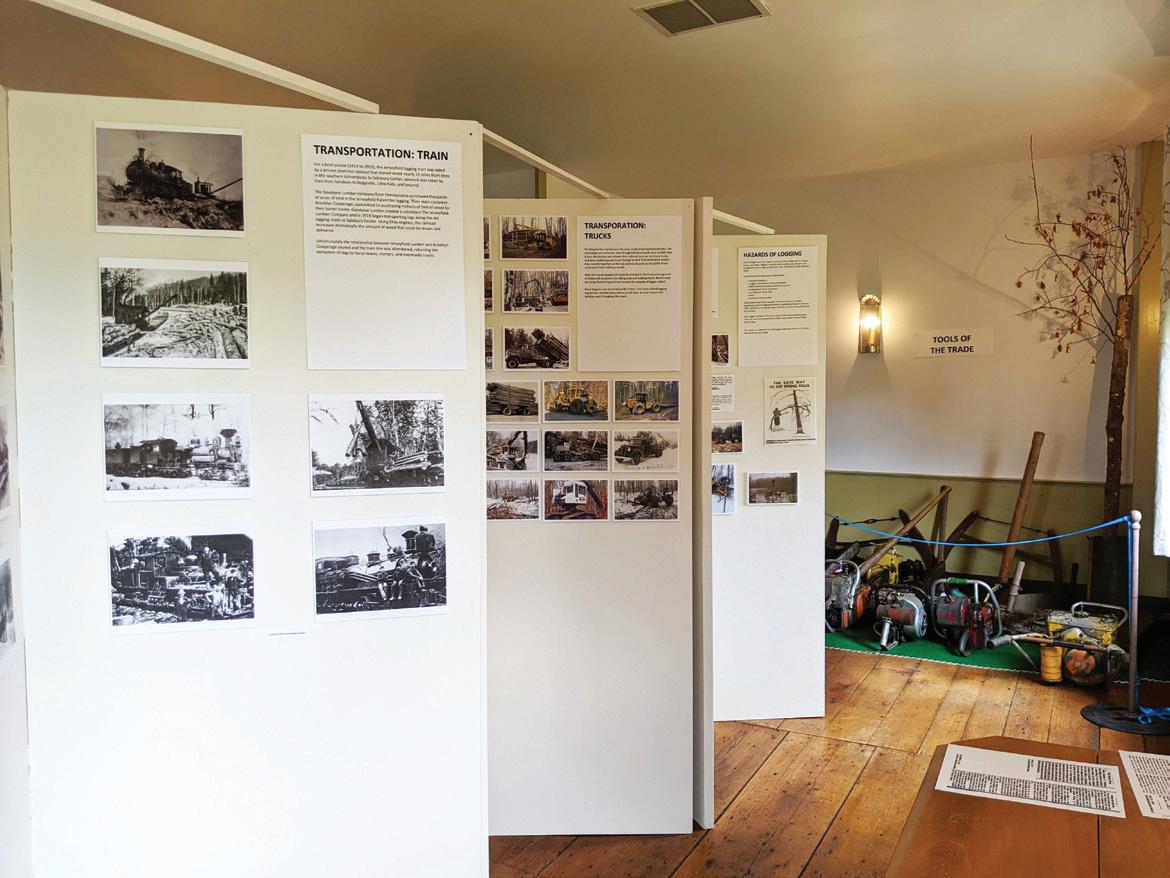
3 minute read
Frisbie House Summer Exhibit: Salisbury Loggers
Story and photos by Carol Vogel
This year, the Salisbury Historical Society’s summer exhibit will present “Salisbury Loggers,” featuring local loggers from the past and present. The Logging industry in Salisbury is an important part of the community’s history, and it continues to be an important part of the area today. Deeply rooted, most area residents have family that were or are currently involved in logging. This exhibit showcases the community and culture that was built around this industry and how it affected commerce and the local economy through the years.
Advertisement
Logging in Salisbury

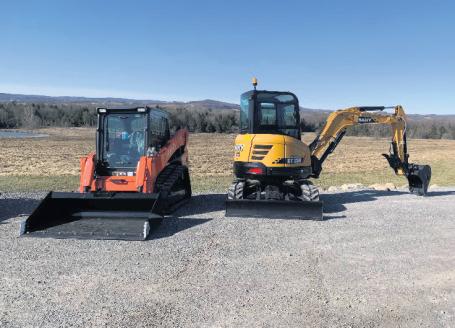
A Salisbury tradition since the 1700s, logging provided homes with heat and utilized the area’s natural resources. Mills tapped into the power of the local waterways and opened opportunities for jobs and a connection with other communities via transportation routes such as the Erie Canal and the railroad network. The strength and fortitude of the families involved is apparent, as the life of a lumberjack was difficult and dangerous.
With the help of historical society members and local families, Kevin Yatarola led the research and installation of the exhibit featuring many aspects of the logging industry in Salisbury. Families who have played an important role in the rich history of logging in Salisbury are featured and accompanied by newspaper articles and rare photos from the late 1800s to 1900s.
“This is a different exhibit because it’s a living tradition. We had two of the family loggers here at the opening last weekend, both in their late 70s and 80s – one of which is still working. One had their five grandchildren here looking at photos of Grandpa that were on display.” Kevin explained. The community connections in this industry are widereaching. A local visitor to the exhibit, Donna Clavette DarlingBoucher, has roots in the Darling family who is featured in the exhibit. Today, her grandson continues the tradition of working in logging. Other family names such as Moore, Lanphere, Helterline, Steciak, and Chmielewski are also featured for their logging legacies.
“Many of the photos were donated by the families,” Kevin added. He was able to hear stories and build the exhibit by speaking with residents as well as researching online for news articles. He also speaks of the community focus of the industry. “All of these people worked with each other. One family would help on a job over here, and then they’d both go work with another family over there.”

Part of the Logging Exhibit throughout to tell the stories of the industry as well as mishaps and thievery that made the news. Transportation of wood and logs evolved over the years and is featured along with the larger corporate lumber companies that operated in the area in the early 1900s.
The exhibit walks you through the local families who were integral to the logging industry, followed by tools of the trade and the unfortunate hazards of logging. The exhibit is also a tribute to those who were injured or lost their lives.
Local newspaper articles are scattered
The exhibit is well organized and gives a glimpse into the lives and skills of the lumberjacks who brought lumber from forests to mills and onward with limited resources and how the industry evolved over time. It truly is a living community exhibit, and the incredible images on display tell how logging has been and continues to be, part of the fabric of residents’ lives.
Permanent Exhibits
In addition to the summer exhibit, the Historical Society has standing collections of cheese-making and milk production, mills along Spruce Creek, the iron mines, one-room schoolhouses, and local characters such as Nat Foster. Relics from St. Bridget’s Catholic Church, including a stained-glass window and pump organ,
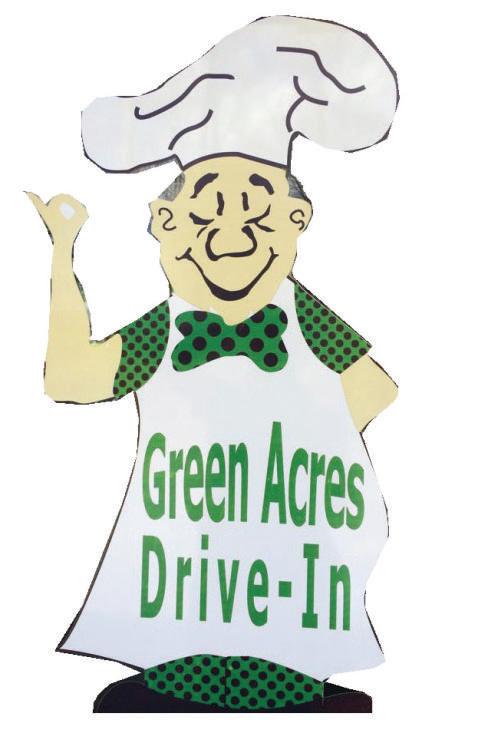
LOGGERS From Page 10
are also on display. You can also view a collection from the former Salisbury Post Office. Themed rooms, such as the dining room and bedroom, give visitors a glimpse into the lives and history of this small but important town.
Built by Billious Avery for the Augustus Frisbie family in 1805, the Frisbie House is a federal-style historic building. It was the first frame house constructed in Salisbury and served as the first inn and tavern. Town meetings were also held here. Added to the State and National Registry of Historic Places in 1999, it is the home of the Salisbury Historical Society, the local heritage and history Museum for the Salisbury area.
Located at #109, Route 29A in Salisbury Center, NY, the Frisbie House will be open every Sunday from 1:00 - 3:00 PM until the weekend before Labor Day.
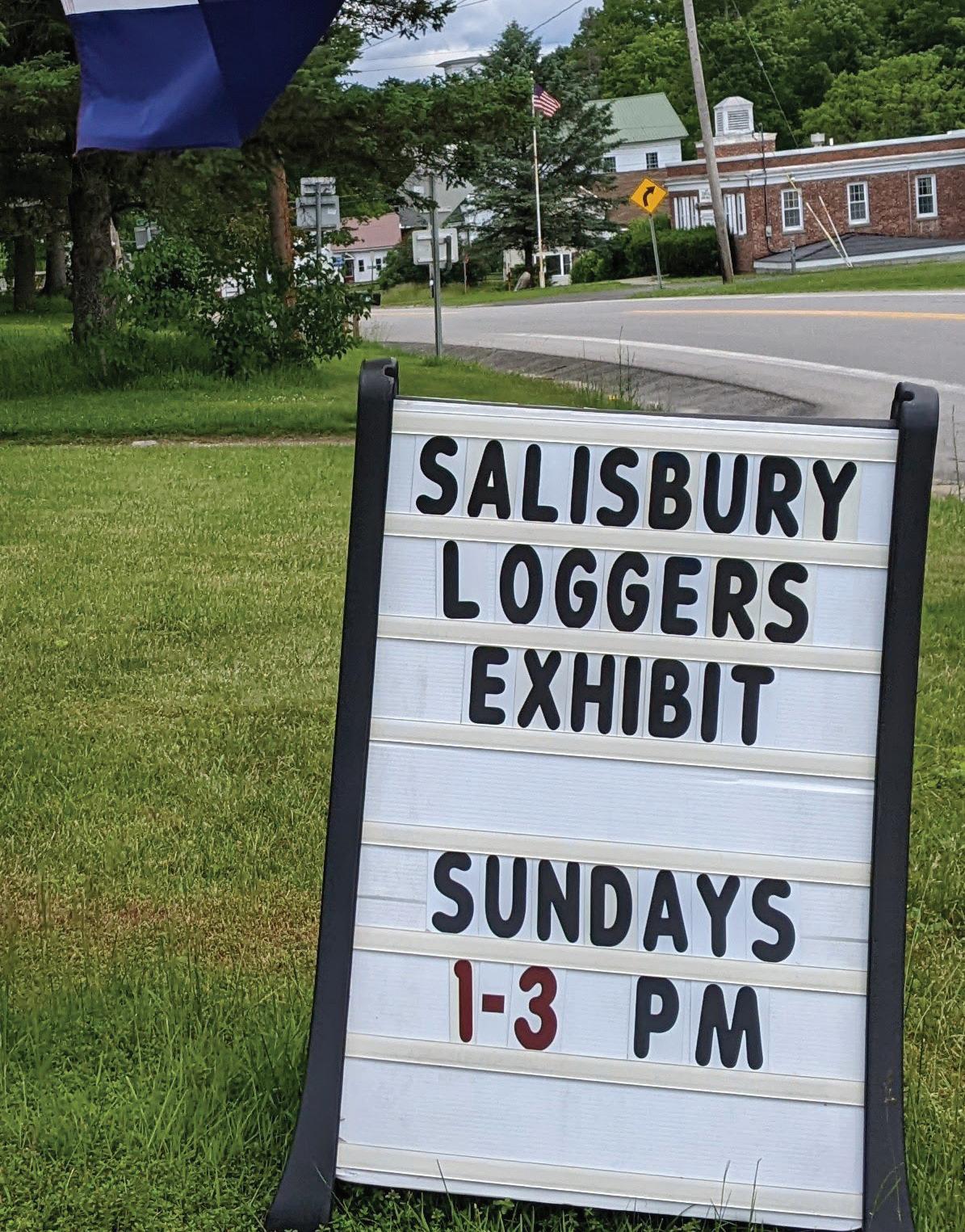
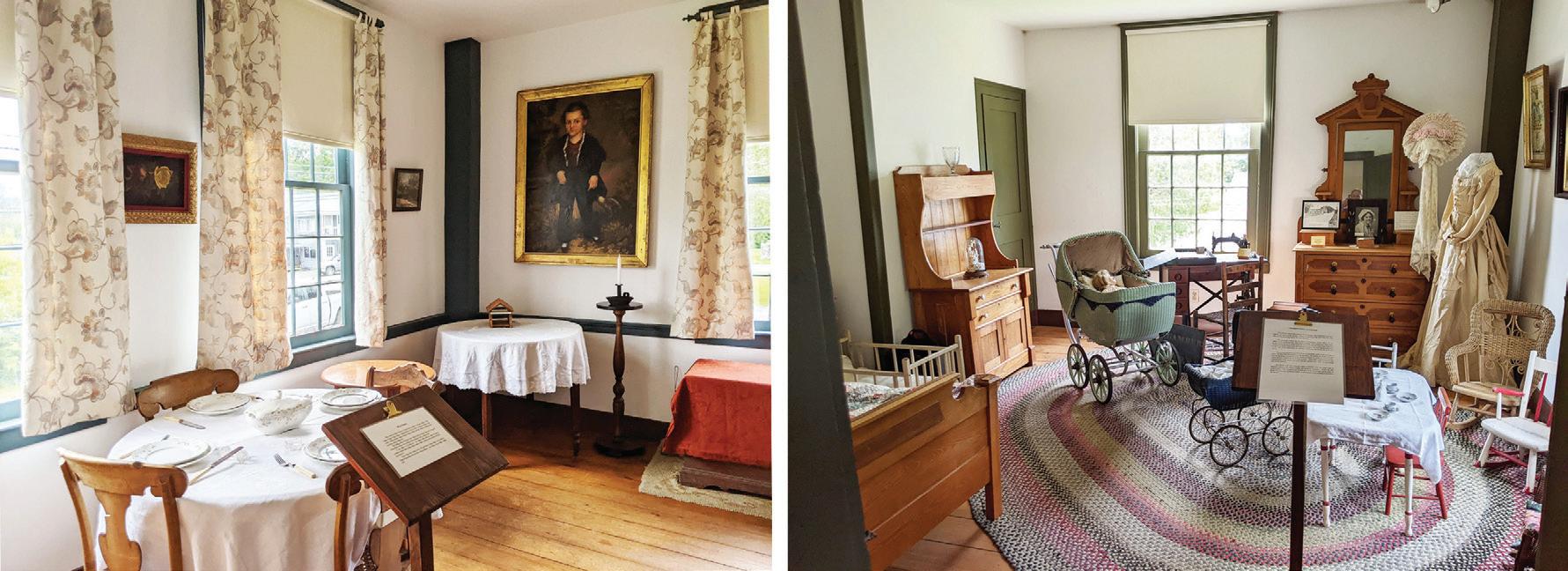
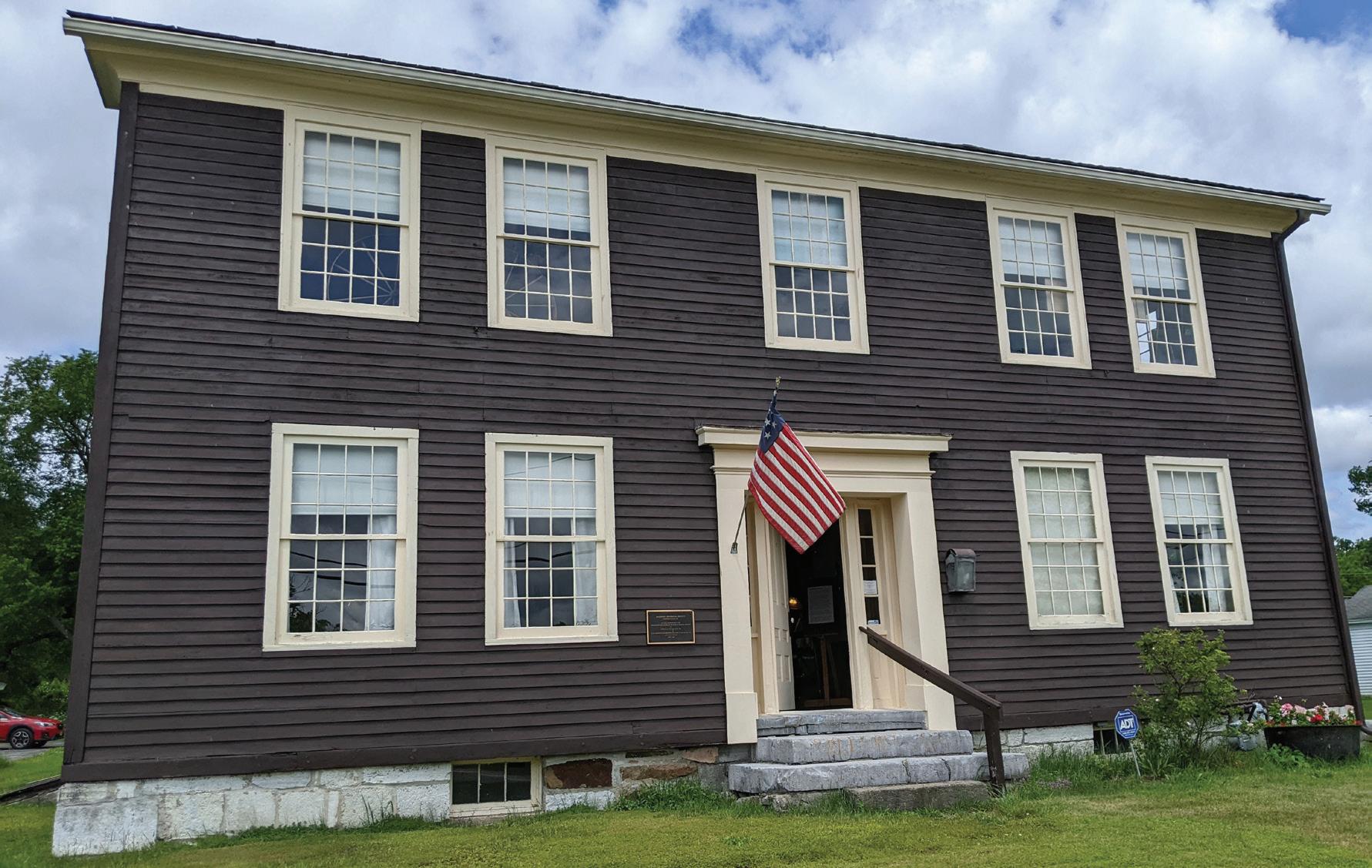
Keep an eye out for special events and talks during the season as well. The Historical Society exists on donations and receives grants based on visitors, so be sure to sign the guest book and donate to help keep the history of the Salisbury area alive at the Frisbie House!
You can follow them on Facebook for more information.










